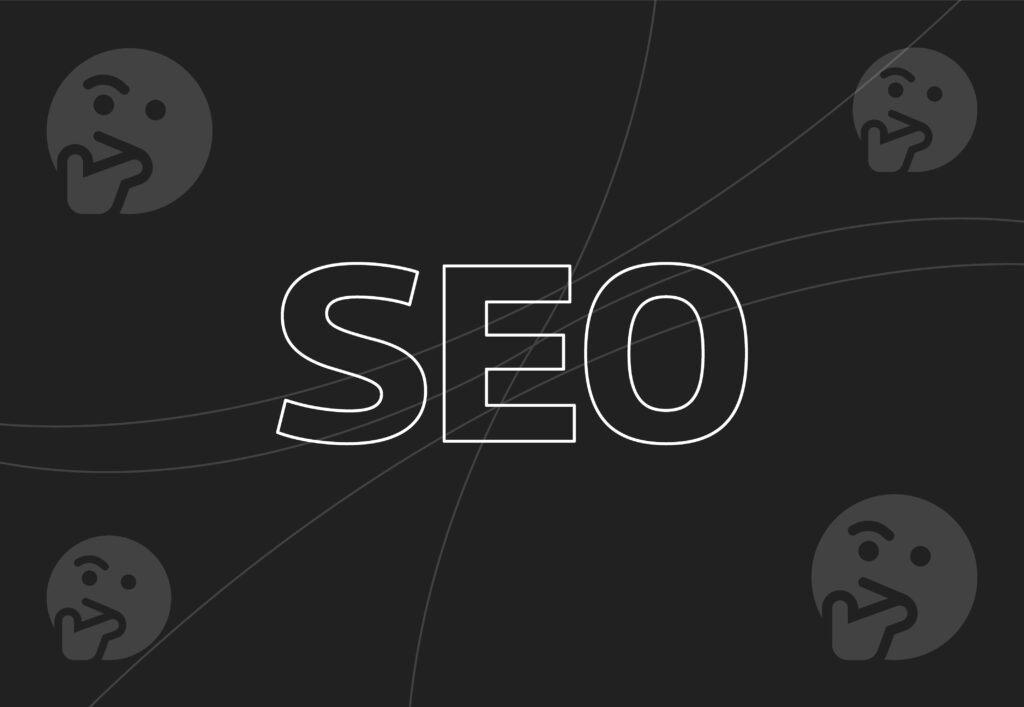
The complete guide to semantic SEO in 2025

Semantic SEO is a school of thought that has become increasingly popular as a fundamental strategy for organic optimisation in recent years. The strategy centres around a focus on concepts, entities, and the relationship between topics throughout website content. It shifts focus away from the keyword-centric approaches of the past to instead focus on providing maximum value to users and providing contextual relevance across interlinked topics.
Search engines are continually developing to provide the most relevant and valuable results to their users. To this end, they have expanded their natural language processing capacity, allowing for greater understanding of content beyond assessing for keyword density throughout text. With this comes more aligned SERPs (search engine results pages) with the intent of the searcher and greater rewards for following EEAT best practices.
In this updated guide for the organic search landscape in 2025, we’ll dive into what semantic SEO is, its impact on search results, up to date best practices and how you can implement it within your organic strategy to drive results.
What is Semantic SEO?
We’ve established that semantic seo has changed the way in which search engines rank and display web pages in SERPs. The development to the current state of organic search did not happen overnight; instead, it adapted through regular updates to the algorithm and implementations of advancing technologies to enhance the end users’ experience.
How semantic search works
Over the past decade, Google has made numerous advancements to its search algorithm, enabling a deeper understanding of search intent. Starting with Googles knowledge graph (2012), their movement to adapt for conversational search with Hummingbird (2013), their inclusion of machine learning to further individualised results through RankBrain (2015), and BERT (2019) to build upon contextual understanding and reasoning.
Each of these innovations works together to provide users with a tailored set of results unique to their search habits and patterns, among other contextual information such as location, language and device type. Resulting in enhanced relevance for searchers and less irrelevant rankings for businesses, enhancing the search experience.
Google Knowledge Graph (2012)
Google first launched The Knowledge Graph in 2012 to enable a better understanding of the relationships between entities. An entity in this sense can be a company, person, service, product, location, or even an idea or feeling. The update represented a significant move in the search landscape and introduced a number of features we now see every day in SERPs. Notable mentions include: knowledge panels (for businesses or notable individuals), people also ask for, and auto-complete suggestions.
This represents the first step away from linear keyword matching to serve search results. Paving the way for how semantic SEO works today in the modern search environment.
Hummingbird (2013)
When Google rolled out the Hummingbird update in 2013, it was considered by many as a complete rewrite of the core algorithm. Adapting to the surging number of mobile searches and the subsequent changes in how users search on the platform. The update’s main focus was to adapt to the conversational search tone, becoming increasingly prevalent across searches on mobile devices. The update had such a prevalent impact that it affected up to 90% of searches made through Google.
This move towards conversational search further aimed to understand the intent of searchers in tandem with The Knowledge Graph to provide factual, relevant results in a streamlined search experience.
RankBrain (2015)
The RankBrain update rolled out in 2015 marked the inclusion of machine learning into Google’s algorithm. It allows for each query to run through an interpretation model to link the query with any related entities before presenting a given SERP. This change allowed for further personalisation across results rather than a direct match of keyword inclusion throughout page content.
The system expanded upon the principles first introduced with Hummingbird and improved the interpretation of the data held within The Knowledge Graph. It allowed Google to interpret a user’s intent more effectively beyond what was entered into the search box.
For example, a search of ‘World Cup location’ can have a number of variations of intent depending on the context of who is completing the search. They could be looking for local directions to a game, searching for where the most recent world cup was held or where the next competition will take place. The RankBrain update allowed for improved understanding based on the individual user, when they are searching and the location they are searching from, to provide the most accurate and contextually relevant results for their search.
BERT (2019)
The BERT update further built on contextual understanding through improved natural language processing. Better understanding complex search queries and understanding the meaning of words in relation to the sentence they are included in. The BERT update was a refinement to Google’s current systems and highlighted their continued efforts to better understand how users search and interact with search engines.
Semantic SEO vs traditional SEO

Each of these updates drove Google’s algorithm further towards a semantic approach when determining which results to deliver for a search query. Moving away from the keyword hyper focus of matching searches to pages with the exact keywords being mentioned on a web page, and developing nuance in SERPs.
Traditional SEO relied heavily on commonly searched keywords and building pages around them. Picture a straight line connecting two dots in a simple matching process between the search and the result, utilising the keyword presence as the main factor. Then consider other core SEO elements like off-page activity and technical proficiency to decide on a SERP ranking order.
This initially allowed individuals to engage in black hat SEO tactics to cheat the system and rank higher in SERPs. Google’s shift away from these methods was in part to limit any manipulation of the algorithm that did not provide value to the end user.
Semantic SEO considers a much wider range of factors and adds greater importance to E-E-A-T principles (Experience, Expertise, Authoritativeness, Trustworthiness) throughout website content. The adjustment requires content to be written for the value provided to the end user and not for search engines. Considering the internal linking structure, related content and depth of expertise alongside traditional SEO factors.
Core elements of semantic SEO
In order to implement a semantic SEO strategy, there are a number of key areas to consider when planning your approach to content. The following 5 key steps are crucial to achieving the best results.
Understanding search intent
Through the above Google algorithm updates, there is a clear theme throughout of a transition to understanding user intent through search. The main value proposition of any search engine is to provide the most relevant and valuable search results to a search query. In semantic SEO, it is crucial to not only consider how search engines interpret content but also consider the interrelated topics that are connected to the main topic of the page.
When planning content from a semantic perspective, it is important to expand the scope and consider the wider topic as a whole. For example, when considering our SEO page a user may be interested in reading about technical, on-page, off-page or more niche topics such as local or international SEO. Structuring content to include these aspects with clear links through to the topics that may be of interest improves user experience and the scope of a topic. Providing greater value to search engines and users alike.
Keyword and topic research
Although there is less emphasis on keyword research as the sole focus of a strategy, it still needs to be considered. Keywords remain a core element of search engines’ understanding of topic relevance to search queries. Consider a wider approach to keyword research, mapping out interconnected topics rather than simply researching the target keywords for the page being optimised.
This shift to topic research will not only provide benefits in search visibility but also improve site structure and ease of navigation through your site. Ensuring that all connected topics are easily accessible from any related pages as you develop them.
Content development
Once you have a clear understanding of the search volumes across a topic, begin structuring content in a manner that naturally includes related topics throughout your content. Breaking larger topics into smaller focuses and including links to pages where users can explore topics in greater depth.
Technical SEO and user experience (UX)
Semantic SEO is a content strategy at heart, but technical and user experience elements remain important. Technical SEO ensures that pages are accessible and indexable by search engines, without which the great content that has been developed will not be ranked, regardless of quality. Consider elements such as site speed, structured data markup, redirects and orphaned pages to ensure you are not limiting the website’s reach with poor technical performance.
Once the page is ranking, it’s crucial to understand how users interact with the website and any negative factors that could be impacting that experience. Analyse metrics such as bounce rate, average time on site or a more in-depth tool such as Microsoft Clarity to better understand how users interact with your site.
Internal linking and contextual consistency
Ensure that any internal linking that is included makes sense for the end user. Does it add depth to the topic, or has it been included purely to provide additional authority to the target page? With search engines becoming more sophisticated, contextual consistency is increasingly important and irrelevant links can have the opposite effect if not selected correctly.
For a full guide on how to correctly include internal linking throughout your website content, consider our internal linking best practices guide.
What does this mean for SEO strategies?
The rise of semantic SEO has fundamentally changed how an on-page SEO strategy is developed and implemented. Forcing a wider scope of topics as a whole and a clear relationship between pillar pages and supporting content from the outset. Breaking topics down into their smaller elements and writing in-depth content across all aspects.
The benefits of semantic SEO
Semantic SEO has a number of benefits, including and beyond organic visibility and enhanced ranking positions.
Enhanced user experience (UX)
Creating content in a semantic style will provide greater value to the user. Comprehensive coverage of a topic and the intent of users searching for it are crucial to a semantic SEO strategy, ensuring that users who land on the page are provided with clear value aligned with what they are searching for.
Beyond this, the interconnectedness of topics required in a semantic approach makes it easy for users to identify aspects they would like to explore further with an easily accessible link to the resource. Not only enhancing the user experience but also improving engagement rates and average time on site.
Improved customer journey
With an enhanced user experience comes a greater opportunity to drive users through the sales funnel. Transitioning traffic from informational searches by users at the top of the funnel towards on-site pages and resources that are more conversion-focused. Positioning the business as experts in the industry builds trust and enhances brand awareness for future interactions with the business.
Thought leadership
In line with positioning the business as industry experts, by creating information-rich resources that provide clear value to users, the business can stand out as the go-to place for industry information. In turn, the additional brand awareness can have a positive impact on CTR (click-through rate) and increase branded search volumes.
Greater organic visibility
As expected with a form of search engine optimisation, a core benefit of implementing a semantic SEO strategy is the improved organic visibility that comes along with executing it successfully. Google and other search engines will better understand the relationships between website content and in turn, rank pages higher for targeted terms.
Alongside the improved ranking for the specific pages optimised through the semantic approach, internal linking, which is an essential element, shares authority between pages. Boosting rankings and visibility across multiple pages within topics as a whole, instead of the previously siloed improvement that came from traditional keyword-focused optimisations.
AI overview and LLM visibility
Finally, the way in which on-page content is processed and considered has continued to develop with the rise of AI integration into search platforms and LLM chatbots that make up an increasing percentage of search traffic. These platforms rely on the contextual understanding of topics, among other trust factors such as trust signals, authority and technical factors such as schema to decide which site to feature.
Having high-quality informational content that covers a topic in depth is the best way to capture positions within the AI overviews. Gaining enhanced brand visibility and trust value from users.
Future of semantic SEO
We have covered the current state of semantic SEO in 2025, but how will it continue to develop over the coming months and years?
There is an increasing focus on AI integration within the search landscape. Key considerations should be AEO (Answer Engine Optimisations) and GEO (Generative Engine Optimisation). Both are prominent topics within the SEO sphere as we navigate changing search habits of users and how search engines are adapting to match user needs.
If you need help implementing a semantic SEO strategy or expanding your organic visibility to support marketing goals, speak to our team of experts today.



